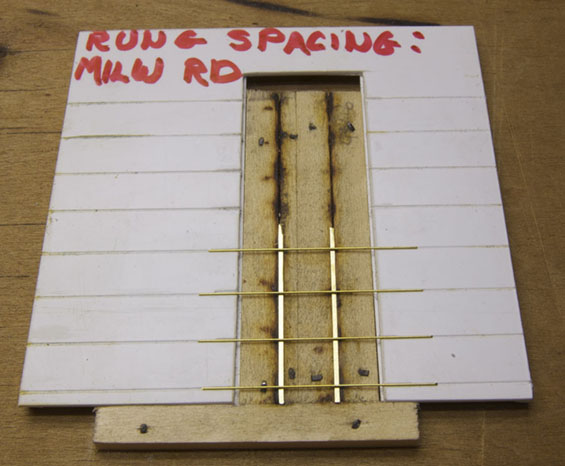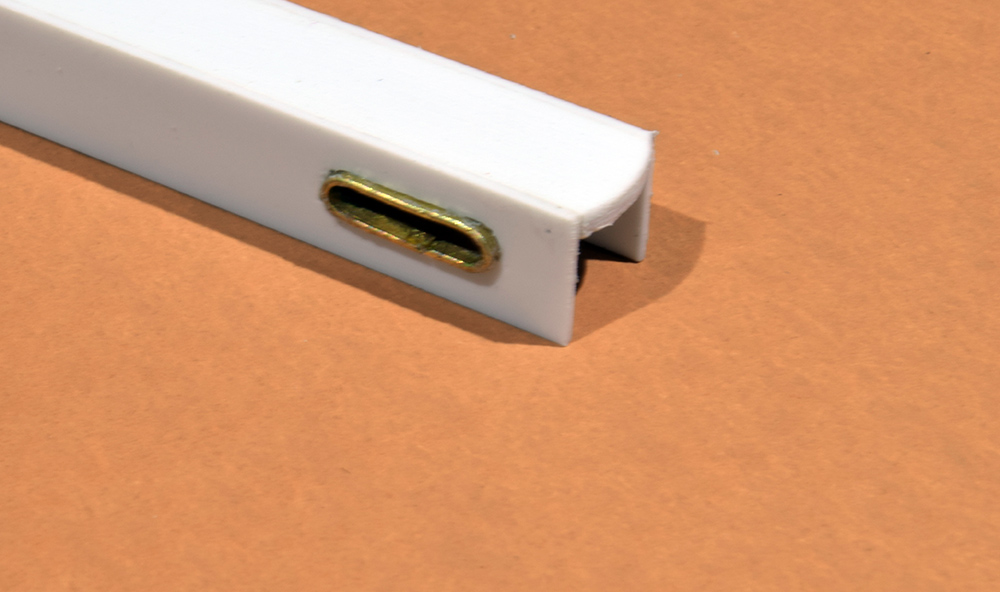Brass has always intimidated me. In fact metalworking in general always felt beyond my reach. My dad was a machinist in a factory that made gears for the automotive industry. After forty years, he learned a thing or two about working metal. Sadly I never tapped into that knowledge before he passed. I can only imagine the things he could have taught me.
Recently, I pulled out a project I started years ago and went sour on because I didn’t know how to proceed. That’s my habit: get frustrated, then quit. I understand this is keeping me stuck in the craft and that’s not good. I want to change that.
In looking at my project with fresh eyes, I noticed details I wanted to improve and others I needed to add. I could do them in styrene but brass provides a finer, crisper appearance that mimics the delicate look of the prototype. The work isn’t that complex, just different, so brass it is.

I learned how to make this soldering jig from an article by Gene Deimling in O Scale Trains Magazine.
I’ve made brass parts before, so I’m not starting from zero (photo above). Like so many other aspects of our craft, mindset is where the work begins. This time, I feel ready to learn what this material offers for modeling and requires for a successful outcome. I’m comfortable with the idea that my initial work is going to look crude and clumsy. Why wouldn’t it? I’m a rank beginner with a lot to learn.
Lesson #1 for me is that this is a slow material. I can cut, shape and glue styrene quickly but metal rewards patience. I find that oddly satisfying. Metal has a precision to it that I like. I’ve wanted to slow down and quiet my mind at the bench and brass is a good medium for doing that.
Lesson #2 is one I think I’ve finally taken to heart: if I don’t like the fit or quality of a piece, I remake it. No more debating with myself, no recriminations about lost time. To borrow a phrase, I just do it. Fixing a soldered assembly is more difficult than making a single piece (or two) over.
Lesson #3: Planning ahead is essential. For the pieces I’m working on I need to think through the sequence for soldering. The use of solder with different melting points will help along with heat sinks from bits of wet paper towel. Because I need duplicate parts, I made holding jigs that keep everything in line. I also realize that any machining, shaping, drilling of the individual pieces, needs to be done before the soldering iron comes out.

The styrene draft gear was simple. So was the brass striker casting once I realized how easily I could shape it by bending the brass strip around a drill bit and then trim the ends for a clean joint. Making a bending jig for bits like this is a no-brainer.
I’m happiest at the bench when I feel challenged. Doing the same thing over and over can produce complacency and boredom, at least it can for me. I like feeling engaged by the work and pushing my skill set. I’m convinced the only real limitations in this work are the ones we impose on ourselves. I decided to start with the smaller details (photo above) and work my way toward the more complicated stuff. However you decide, the best way to begin is to just plunge in and do something.
From time to time, I’ll share my misadventures and progress with brass work in the hope of starting a conversation for those who want to try it themselves. Be advised, the only expertise I have is in doing things the hard way.
Cheers
Mike
Mike,
Gene is a wizard with brass and he has been very kind sharing his accumulated knowledge with all of us. I have found that the keys to successful brass construction are, in no particular order: a very good iron with a clean tinned tip, clean brass mating surfaces, very thin solder wire (0.015″ diameter) and jigs. I enjoy soldering – to me it’s almost therapeutic watching the solder flow and set.
I have converted a desk top scotch tape dispenser as the pay-off reel for my roll of solder wire. It’s very convenient and east easy to work with one hand.
Keep up the great work.
Mike
Hi Michael,
As I get into this work I find that my soldering techniques need more attention. Using a tape dispenser for the solder is a slick idea.
Mike